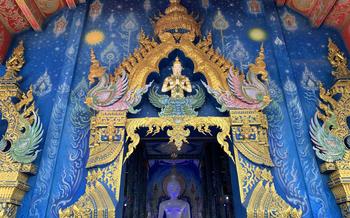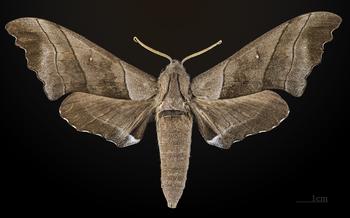
Muang Pai Historical Park
- The Importance of the Park
- Location and Accessibility
- Exploring the Park
- The Wat Klang Temple
- The Ancient City Walls
- The Buddha Image
- The Nan Chao Tombs:
- The Museum
- Local Festivals and Events
- Nearby Attractions
- Accommodation and Dining
- Insider Tip
The Importance of the Park
Muang Pai Historical Park is of immense importance as a cultural heritage site. The park preserves and protects the rich history and cultural legacy of the region. The ancient ruins, artifacts, and structures within the park provide valuable insights into the lives and traditions of the people who inhabited this area centuries ago. The park serves as a living museum, showcasing the architectural prowess and artistic expressions of the past.
Furthermore, the park holds significant architectural significance. The ancient structures, particularly the Wat Klang Temple, Chedi Phra That Mae Yen, and the ancient city walls, are remarkable examples of traditional Thai architecture. The intricate carvings, stupas, and decorative elements on these structures showcase the skill and craftsmanship of the ancient builders. The park offers an opportunity to study and appreciate the unique architectural heritage of the region.
Lastly, Muang Pai Historical Park is a symbol of local identity for the people of Pai. The park represents their deep-rooted connection to the past and serves as a source of pride and cultural continuity. The preservation and promotion of the park help foster a sense of community and belonging among the local residents, strengthening their cultural identity.
Location and Accessibility
The Muang Pai Historical Park is conveniently situated just a short distance from the bustling Pai town, offering easy access for visitors seeking a journey into the past. To reach the park, one can opt for a leisurely stroll or rent a bicycle, immersing themselves in the serene atmosphere of the surrounding countryside. Alternatively, songthaews, the local mode of transportation, are readily available and provide a budget-friendly option for those seeking a hassle-free journey.
Exploring the Park
The Muang Pai Historical Park is a fascinating place to explore, with its ancient ruins, intricate architecture, and stunning natural surroundings. The park is laid out in a way that allows visitors to easily navigate and discover its highlights.
One of the must-see ruins is the Wat Klang Temple, with its impressive architecture and historical significance. The temple features a large chedi, or stupa, that dominates the skyline and offers panoramic views of the surrounding area. Another highlight is the Chedi Phra That Mae Yen, a unique and beautifully preserved chedi that is considered one of the most important religious sites in the region.
Walking trails and viewpoints throughout the park provide opportunities for visitors to explore the ruins at their own pace and admire the stunning scenery. The park's natural beauty adds to its charm, with lush vegetation, towering trees, and a tranquil river flowing through the grounds.
The Wat Klang Temple
Architectural Features
Wat Klang Temple, a significant historical and religious site within the Muang Pai Historical Park, showcases remarkable architectural features that reflect the grandeur of Lanna craftsmanship. The temple's design incorporates traditional elements such as tiered roofs and intricate carvings, showcasing the artistic prowess of the Lanna people. The main viharn, or assembly hall, stands as the temple's centerpiece, adorned with intricate wood carvings that depict scenes from Buddhist mythology and folklore. The intricate details and craftsmanship of these carvings are a testament to the skill and devotion of the Lanna artisans who created them.
Historical Significance
Wat Klang Temple holds immense historical significance as the oldest surviving temple in Pai. Built in the 14th century, the temple has witnessed the rise and fall of various kingdoms and played a crucial role in the religious and cultural life of the Pai community. Throughout its existence, the temple has undergone several renovations and expansions, reflecting the changing architectural styles and influences of different eras. Despite these modifications, the temple retains its original charm and remains a testament to the enduring legacy of Lanna architecture.
Notable Artifacts and Murals
Wat Klang Temple is renowned for its collection of notable artifacts and murals that provide a glimpse into the religious and cultural heritage of the Lanna Kingdom. The temple houses several ancient Buddha images, each with unique features and historical significance. The murals that adorn the temple walls depict scenes from the life of Buddha, Buddhist cosmology, and traditional Lanna folktales. These beautifully preserved murals offer a visual narrative of the beliefs and values that shaped the Lanna society, making the temple a treasure trove of cultural and artistic expression.
The Ancient City Walls
The ancient city walls of Muang Pai Historical Park stand as a testament to the ingenuity and resilience of the people who once inhabited this land. Constructed centuries ago using traditional techniques, these walls served as a defensive barrier, protecting the city from invaders and ensuring the safety of its residents.
Over time, the walls have undergone significant wear and tear, and only a few sections remain intact. These remnants, however, still provide a glimpse into the grandeur and strategic importance of the city's fortifications. Visitors can explore these sections, marveling at their sturdy construction and imagining the fierce battles that may have taken place within their confines.
The preservation of the remaining city walls is a priority for the local authorities, who recognize their historical and cultural significance. Ongoing efforts are being made to maintain and restore these structures, ensuring that future generations can continue to appreciate this fascinating aspect of Muang Pai's rich heritage.
The Buddha Image
A Monumental Symbol of Faith:
At the heart of the Muang Pai Historical Park, visitors can encounter a majestic Buddha image that stands as a testament to the region's deep-rooted spiritual beliefs. Carved with intricate detail and exuding an aura of serenity, this colossal statue is a masterpiece of Buddhist art.
History and Significance:
The Buddha image is believed to date back to the 13th century, during the Lanna Kingdom's reign. It is said to have been commissioned by a devout Buddhist king who sought to create a symbol of faith that would inspire and guide the local people. The image was initially enshrined within a temple complex but was later moved to its current location within the historical park.
Unique Features and Style:
What sets this Buddha image apart is its remarkable size and intricate craftsmanship. Standing tall at over 10 meters, it is one of the largest Buddha images in the region. The statue is carved from a single block of sandstone, showcasing the exceptional skills of the artisans who created it.
Spiritual and Cultural Importance:
The Buddha image holds immense spiritual and cultural significance for the local population. It is a symbol of peace, compassion, and enlightenment, and many locals visit the park to pay homage and seek blessings. The image is also a reminder of the region's rich Buddhist heritage and the deep devotion of the people to their faith.
The Nan Chao Tombs:
The Nan Chao Tombs are a series of ancient burial sites located within the Muang Pai Historical Park. These tombs date back to the 13th century, when the Nan Chao Kingdom ruled over this region. The tombs are believed to belong to members of the royal family and high-ranking officials.
The Nan Chao Tombs are constructed from large stone slabs and feature intricate carvings. Some of the tombs have been excavated, revealing human remains, jewelry, and other artifacts. These findings have provided valuable insights into the burial practices and customs of the Nan Chao people.
The Nan Chao Tombs are a significant historical and cultural site, offering a glimpse into the past of the Muang Pai region. They are a must-see for anyone interested in the history and archaeology of Thailand.
The Museum
The Muang Pai Historical Park Museum is a treasure trove of artifacts and exhibits that offer a glimpse into the rich cultural heritage of the region. Housed in a traditional Lanna-style building, the museum displays a diverse collection of ancient pottery, tools, weapons, and religious objects excavated from the historical park and surrounding areas.
Visitors can learn about the various civilizations that have inhabited the region throughout history, from the prehistoric era to the present day. The museum also features interactive exhibits that bring the past to life, allowing visitors to experience the daily lives of the people who once called Muang Pai home.
The museum is an essential stop for anyone interested in understanding the history and culture of Mae Hong Son. It provides a fascinating glimpse into the lives of the people who have shaped this region and helps to bring the past to life.
Local Festivals and Events
Muang Pai Historical Park comes alive during local festivals and events, offering a vibrant glimpse into the rich cultural heritage of the region. The most significant event is the Pai Walking Street Market, held every Friday night. The streets transform into a lively night market, showcasing local crafts, souvenirs, street food, and live music performances.
Another must-attend event is the Boat Racing Festival during the Songkran Festival in April. Locals compete in colorful long-tail boat races on the Pai River, creating a festive atmosphere filled with excitement and cheers.
For those interested in spirituality, the Wat Klang Temple Fair is a religious and cultural extravaganza held annually in April. The temple grounds host merit-making ceremonies, traditional dances, and processions, providing an immersive experience of local beliefs and customs.
These festivals and events offer an excellent opportunity to immerse yourself in the local culture, interact with friendly locals, and create lasting memories of your visit to Muang Pai Historical Park.
Nearby Attractions
Beyond the historical park's confines, Pai offers a plethora of natural wonders waiting to be explored. The Pai Canyon, with its striking red cliffs and meandering trails, provides a stunning backdrop for trekking and photography. The Pam Bok Waterfall, cascading down multiple tiers amidst lush greenery, offers a refreshing respite from the tropical heat. For a more adventurous experience, embark on a boat trip to the Tham Lod Cave, an extensive cave system with hidden chambers and glistening stalactites and stalagmites. These nearby attractions complement the historical park, providing a diverse range of experiences for visitors seeking a blend of culture, nature, and adventure.
Accommodation and Dining
Mae Hong Son offers a range of accommodation options, including homestays and guesthouses, catering to different budgets and preferences. These accommodations provide a unique opportunity to immerse yourself in the local culture and connect with the friendly people of the region.
For dining, you can savor the delicious local cuisine at the many restaurants and cafes in the area. Try the famous Khao Soi, a coconut-based curry noodle soup, or indulge in the fresh seafood dishes, a specialty of the region. Don't miss the chance to sample the local fruits, such as mangoes, papayas, and pineapples, which are grown in abundance in the surrounding countryside.
Insider Tip
-
Best time to visit: The best time to visit Muang Pai Historical Park is during the cool and dry season, from November to February. The weather is pleasant, with mild temperatures and clear skies, making it ideal for exploring the ruins and surrounding areas. Avoid the rainy season, which typically lasts from June to October, as heavy rainfall can make the trails muddy and slippery.
-
Tips for photography: To capture stunning photographs of the historical park, bring a wide-angle lens to capture the vastness of the ruins and the surrounding landscape. Use a tripod to stabilize your camera for sharp shots, especially in low-light conditions. Experiment with different angles and perspectives to create unique and captivating images.
-
Respecting local customs: When visiting the historical park, be mindful of local customs and traditions. Dress modestly, covering your shoulders and knees, and avoid wearing revealing clothing. Be respectful of religious sites, such as the Wat Klang Temple, and refrain from touching or climbing on the ancient ruins.



